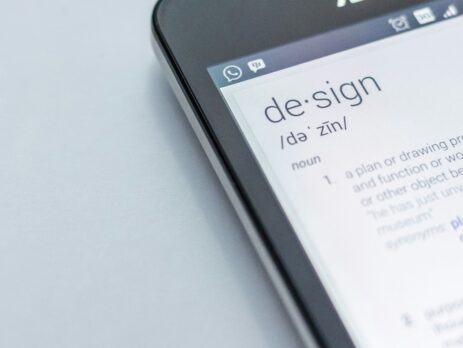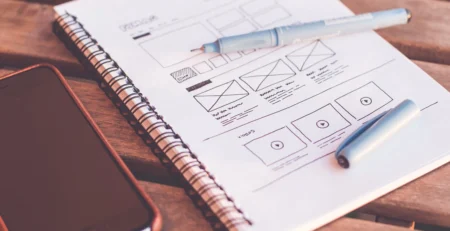How To Be A Great Design Manager And Not A Terrible One
Everyone wants to be a good boss, but not everyone can achieve this. Being a good boss is more than offering your workers flexibility or organizing casual perks like office snacks and “Taco Tuesdays”. At its core, being an outstanding leader begins with a fusion of charisma, professionalism, and specific skill sets.
Have you been appointed the new design manager? As a new leader who just stepped into their role, you may be grappling with the weight of leadership, the need to impress, and the desire to excel. As a design manager, your responsibilities go beyond aesthetics; you hold the key to orchestrating creative success within your team.
If you are wondering how to be an exceptional design manager, you have come to the right place. Below, we have provided all you need to know about being a great leader and all you need to do to exhibit this leadership.
The Role Of A Design Manager
Becoming the best design manager begins with ensuring you are correctly performing your duties. This, in turn, starts with learning what these duties are.
Of course, if you have been accepted or employed as a design manager, chances are you are already aware of these roles.
However, if you are not, a design manager’s role is to manage or oversee a design team. This is often accompanied by roles such as arranging collaborative projects with other employees, delegating tasks, and checking projects for quality. Your role as a design manager is not to micro-manage designers but to ensure the smooth running of the design process while maintaining design quality standards.
Design managers themselves are usually qualified and experienced managers. They are creative directors who lead a team of designers in a creative setting.
Before being considered hired as a design manager, an individual must possess several skills. Some of these skills include:
- Design skills and knowledge
- Analytical thinking skills
- Determination and persistence
- Leadership and motivational skills
- Digital computer and software technical know-how
- Creative thinking.
With these skills, a design manager is expected to perform a series of tasks and responsibilities that include but are not limited to:
- Motivating the design team
- Encouraging innovation through promoting creativity and “thinking out of the box”
- Ensuring timeliness of all design projects
- Overseeing the design process with an understanding
- Collaborating with clients and performing quality checks to ensure customer satisfaction
- Conducting general design reviews and communicating necessary feedback to teams
- Minimizing errors during the design process and ensuring overall design efficiency
- Thoroughly documenting the design process for transparency and accountability
- Approving timesheets
- Setting quality standards

Why Does Being A Great Design Manager Matter?
Being a good manager, an achievement more than several steps above simply being a design manager is critical for the success of any business.
A good design manager is like an adhesive that holds the team of designers together. They facilitate success, thereby driving the business itself towards success.
Being a great design manager matters because:
1. It Provides Direction: Sheep need a great Shepherd to guide them in the right direction, or they get lost or worse. Although designers are far from being sheep, they still require a good leader to guide them. As such, a good design manager directs a team of designers. This direction can be through suggestions, instructions, training, and motivation when necessary.
2. Improve Team Morale: Having a more-than-capable manager is an instant morale boost for many designers. This prevents quiet quitting and boosts employee engagement. A good design manager provides motivation, creates a great environment for team members to flourish, encourages productivity, and drives their team toward success.
3. Increase Employee Retention: About 50.5 million people quit their jobs in 2022. This number is even higher than that of 2022. Needless to say, many companies are trying to retain employees. This is because employee resignation comes with various problems, the most glaring of which is employee turnover costs. Since research shows that turnover can cost employers 33% of an employee’s annual salary, employers strive to keep employees satisfied and improve retention. Design managers make this happen by creating a positive environment where employees are happier, operations are streamlined, and burnout is minimal.
4. Delegates Task: The constant confusion of who does what is a problem that minimizes productivity and grounds a business’s quest for success to a halt. However, with a design manager, tasks are assigned as necessary, and employees feel an increased sense of responsibility. This creates accountability that encourages the timely execution and completion of projects.

How To Be A Great Design Manager
So you have learned the importance of a design manager, but how exactly do you become one?
There is no textbook formular for becoming a great design manager. However, there are specific steps you can take to ensure you become one.
Some things you can do to become a great design manager and not a horrible one include:
1. Encourage Communication
Many leaders tend to think that one-way communication is a great way to lead. This is usually characterized by them giving instructions for work and not accepting or welcoming inputs from employees.
Although this type of communication might work in specific settings, it is usually not the best in a creative setting like a design team. As such, being a good design manager begins with normalizing open conversations that do not shun employees.
Design requires talent, and it is the manager’s role to nurture and harness this talent. One way to do this is to encourage creative thinking and the freedom of employers to express their opinions, especially when it comes to design.
Encourage team members and employees to be comfortable with asking questions, seeking advice, correcting your mistakes if necessary, and simply being comfortable with sharing information with you. Make your designers feel seen and heard.
There are several ways in which you can promote communication. This includes:
- Think tanks or huddle meetings
- One-on-one conversations
- Monthly meetings
- Project meetings
When it comes to open communications, making your designers feel heard doesn’t begin and end with physical conversations. Several communication tools like Google Meet, Zoom, Slack, and Loom are great communication channels you can employ. You can also try social media platforms like Threads and X.
Regardless of the channels you choose, ensure they provide an uninhibited and seamless exchange of information.
2. Show Interest In Them
Communication is not the only way to make your designers feel valued and seen. The simple action of showing genuine interest in them, their abilities, and their growth as professionals is a great way to be a good boss.
Do you give your designers accolades, praise them when they achieve feats, or provide employee recognition in any way? Do you offer workshops and training so they can hone existing skills and learn new ones? Do you show interest in their inputs during project design?
Showing interest in your designers is a great way to be supportive of them. This not only builds their character but also builds a great professional relationship. Most importantly, showing interest and empathy is a great way to keep designers engaged and highly productive as they are more satisfied in their roles. These are only a few benefits of supporting your employee’s career aspirations.
3. Align Your Team
Aligning your team is important as a great manager. This is behind ensuring every team member is on the same page.
Not every design manager chooses to align their team properly. However, this alignment ensures every designer works together to achieve a common goal seamlessly.
Think of being a design manager as being a football coach. You can’t just leave your footballers on the team for them to assume whatever position they want or play however they feel like. You need to strategize and place each team member in a position that best fits their skills.
This usually begins with regular meetings where the coach discusses roles and ensures everyone is on the same page.
As a good manager, you should implement this process. Be aware of your designers’ individual strengths and weaknesses and use these to know where they fit in best. Additionally, ensure every designer is aware of their responsibilities on projects after they have been assigned duties.
Of course, the key to having creative designers with unique skills that can be put to work in different roles is to find the right talents. To do this, it is crucial to work with influential creative staffing companies like icreatives staffing. From full-time employees to contract workers, icreatives is your trusted partner for finding and hiring the
4. Set Clear Goals
How will you be a good design manager if you aren’t even leading your team of designers toward a common goal?
Goals aren’t only necessary for the success of the business. Goals are also essential for boosting productivity among all designers.
When designers know they are working towards a common cause, they can stay focused during their activities. This eliminates drawbacks like delays and project failure when designers collaborate.
There are several ways to set God as a good design manager. These include:
- Regular meetings
- Clearly communicating objectives to all designers
- Breaking large feats into smaller, easily achievable goals
- Coming up with KPIs to regularly measure success rates.
5. Inspire Confidence
Employees often copy the attitudes of leaders at their workplace. This is because leaders, especially good ones, usually leave an imprint on employees. This makes the effect of a good manager on employees even more profound.
Your role as a good design manager extends past services like directing design. It also requires you to boost confidence in your team.
Designers in a team may be skilled, but it won’t matter if they don’t aren’t confident in their skills. While the occasional pep talk is a great idea, there are other ways you can inspire confidence in your team of designers.
These include:
- Sponsoring and hosting skills training
- Encouraging personal development
- Inviting veteran designers to come and educate the team.
- Offering subscriptions to design-learning platforms.
6. Promote Accountability
In one study, 91% of respondents stated that accountability was one of the most important things they’d like to see in their workplace.
Another way to be a good leader is to promote accountability among designers.
Mistakes, flaws, and drawbacks are present in any industry, and the design industry is not left out. However, a great way to minimize this is to be a great leader and infuse a great sense of accountability in your team of designers.
Since leading by example is a great way to lead, it is vital to begin by being an accountable leader. A great design manager should have no issues admitting their mistakes.
Did a project fail or miss a deadline because of your shortcomings? Don’t try to bury the evidence or ignore the problem. Admit to your designers that it was your fault.
Another thing you can do to promote accountability is to accept constructive criticism. No one is perfect, and no man is an island of knowledge. If you make a mistake, don’t just own up to it-accept the suggestions on how to remedy the problem and see if any good ideas come from this suggestion.
Doing this fosters a sense of accountability in your team. It also enables creative thinking, fosters collaboration, and facilitates open communication.
7. Build Your Design Skills
Soft skills are essential factors in modern staffing, especially for managers. While having soft skills like communication is a great way to be a design manager, you still need to be an expert at design to lead a team of designers. To effectively manage a design team, it is crucial to build your design skills.
Having a strong foundation in design principles will help you lead the team towards achieving high-quality design projects. Some ways of developing your design skills are through continuous learning to stay on top of the changing design trends and technical changes.
You can also seek out growth opportunities like training and workshop events where you can continue to challenge yourself. Doing this will help you build your skills and experience, both of which are important for leading. More importantly, familiarize yourself with the new design technological solutions to make you well-versed in the efficient execution of design projects.
8. Build Your Network
Leading doesn’t begin and end with your team of designers. It also includes networking with other leaders in the design industry to better build up your leadership skills. Increase your network by joining professional organizations or attending industry events.
Being A Great Design Manager
The ability to be a great design manager depends greatly on understanding the nuances of leadership, communication, and empathy.
Being a good leader doesn’t begin and end with overseeing design projects. It also involves providing nurturing a supportive and empowering environment for your design team, focusing on their growth, and fostering open and transparent communication, you can truly become a great design manager.
However, most importantly, being a great design manager begins by having a creative team of designers with the brightest mind.
Are you struggling to find and hire talented designers?
Partnering with icreativefs is an efficient way to easily and quickly hire talented designers. With a talent pool of candidates that cut across various industries, icreatives is the bridge that connects ambitious companies to quality talents.
Are you ready to build your dream design team?
Find creatives on icreatives today.













